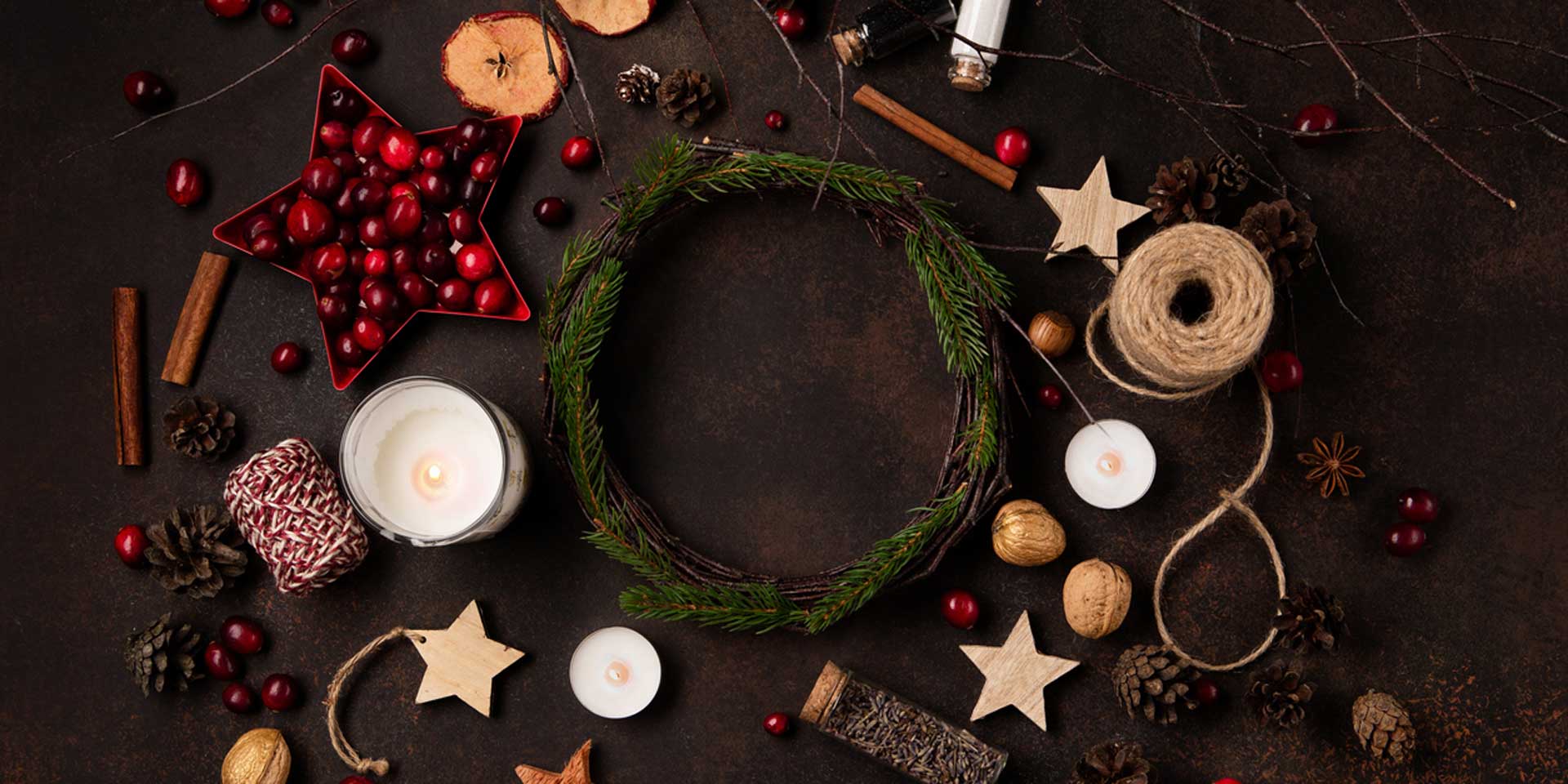
Yule was originally the Winter Solistice as celebrated by our ancestors all over northern Europe. Whether your spiritual ancestors called it “Jól,” ” Geol,” or ” Jul,” this winter holiday focused around the same driving force – the celebration of continued life in Winter.
During ancient times, Yule was a time to celebrate the halfway point of Winter, the strengthening or returning of the Sun, and what that meant in reference to their local deities and way of life.
Norse Pagans called it Jól, Old English Pagans called it Geol, Danish Pagans called it Jul, and each culture celebrated this winter holiday in alignment with nature and their local deities.
During the introduction of Wicca and the rise of Neopaganism, many of these ancient Pagan cultures were combined while others, such as Saturnalia, had not yet been discovered.
Yule became the popularized name for this Neopagan Wheel of the Year sabbat we know of today.
As today’s Witches revert the holiday back to its original sabbat, some people recognize that we are celebrating the Pagan (any religion that existed before the rise of Christianity) Christmas, or the version of Christmas that existed before Christ.
Over the course of history, Christians worked very hard to eradicate any culture that didn’t fit into their paradigm. This uprising and takeover of Christianity had one goal – to convert as many people as possible.
This mass conversion resulted in many adaptations of existing Gods and Winter Solstice traditions.
The most direct example was the conversion of Yule (Jól) to Christmas. In the Christian mindset, Jólnir worshippers “needed” to be converted into Jesus worshippers, or Christians. So, Yuletide was “cleverly” transformed into Christmastide to make it easier to convert Jól celebrations into Christmas celebrations.
Now, we’re working hard to reclaim our roots and return to the natural celebrations of Earth. This has caused many people to say that we’re celebrating “Pagan Christmas.”
For the record, most Witches refer to the holiday as their culture’s original name for the Winter Solstice.
Technically, the name of the event that happens during this cold month is called the Winter Solstice, hiemal solstice, or hibernal solstice. These are the scientific names for the event that creates the shortest day of the year.
The earth is at its farthest tipping point from the sun, the sun is at its lowest maximum point in the sky, and the night is the longest night of the year.
The Winter Solstice literally happens for everyone, regardless of what their culture calls it. So, it’s a great fallback term if you are unsure of where your path is taking you. It’s also a great umbrella term if your spiritual group has many different backgrounds.
Spiritually, the Winter Solstice is a good time to recognize the hardships you have overcome, release negative energy, and celebrate the things in life that truly bring you joy.
These practices directly mirror the traditional mindsets of “the hardest part of winter is behind us,” “my deity is closing the veil and returning rogue, sometimes evil spirits back to where they belong,” and “so far so good during this harsh winter.”
Practice rituals that celebrate the optimistic points in your life. Celebrate the change of the seasons with rituals that recognize how our lifestyles match the natural flow of Earth.
Look back on your ancestral history and discover how your ancestors celebrated during the Yule season.
Have Italian heritage? Enjoy a total bacchanal feast during Saturnalia, you gift-giving, wine-loving Witch!
Anyway, each of our world’s Pagan families will celebrate differently, in regards to their Pagan roots.
Every Pagan celebrates the Winter Solstice differently, depending on their pantheon of choice and how those deities historically function at the midpoint of Winter. These historic deity activities make up the rituals that each Witch celebrates.
Some local deities began a journey to increase in power. Other deities were reborn with the task to increase the light in our world.
Odin’s form Jólnir collects the last of the souls during the closing of the Veil, the Holly King dies and The Goddess gives birth to the Oak King, the Horned God is reborn as the Solstice Sun, and many more cultural shifts occur.
Overall, every Witch enjoys the return of the Sun after the longest night of the year and the optimism it brings back into life. We realize that we must thank and release the internal struggles that we worked through during the dark half of the year.
Then, we welcome the strength to use the lessons from our prior hardships.
We celebrate the light that always comes after the dark, the peace that comes after the struggle.
Then, of course, we feast!
There are many ways to celebrate the Winter Solstice, depending on your cultural history.
There are many Pagan holidays in December. Because Paganism is a broad term that means any religion that is not mainstream, any religion that existed before the rise of Christianity, or any religion that works with multiple Goddesses and Gods, there are technically a lot of Pagan holidays that fall in the last month of the year.
We encourage everyone to explore their DNA and family roots to discover their culture’s original winter celebrations!
Here’s a cheat sheet:
You May Also Like:
Copyright 2021 Plentiful Earth, LLC. / All Rights Reserved.
Every year, the stunning April Lyrid Meteor Shower emerges as a celestial event that captivates…
Looking for ways to kill ants naturally and keep ants out of your house without…
Unlock the power of 555 for life-changing transformation, personal growth, and twin flame connections. Embrace…
Today, we're delving into the sacred world of Palo Santo, a naturally spiritual wood with…
The anticipation is building for one of the most awe-inspiring celestial events of the decade:…
A pentacle plate, commonly referred to as an altar pentacle or altar tile, is a…